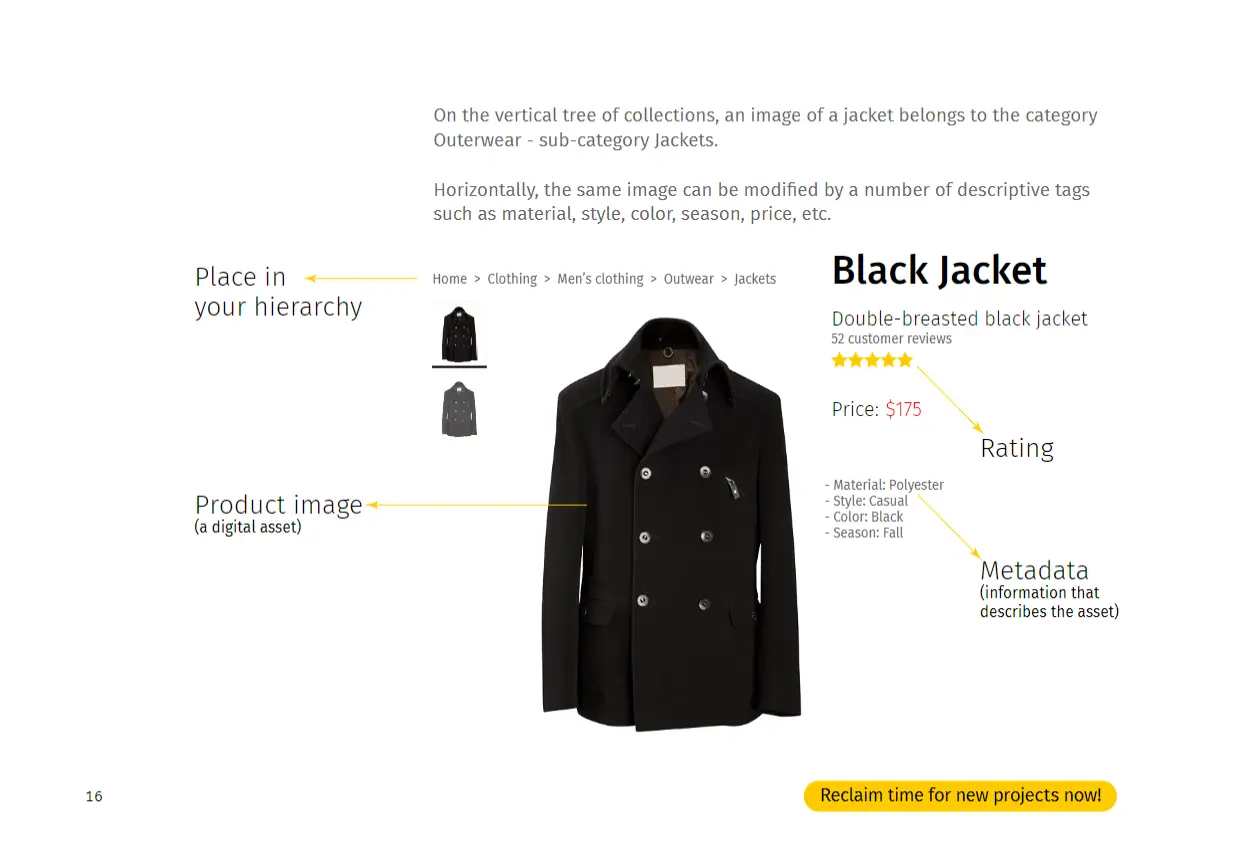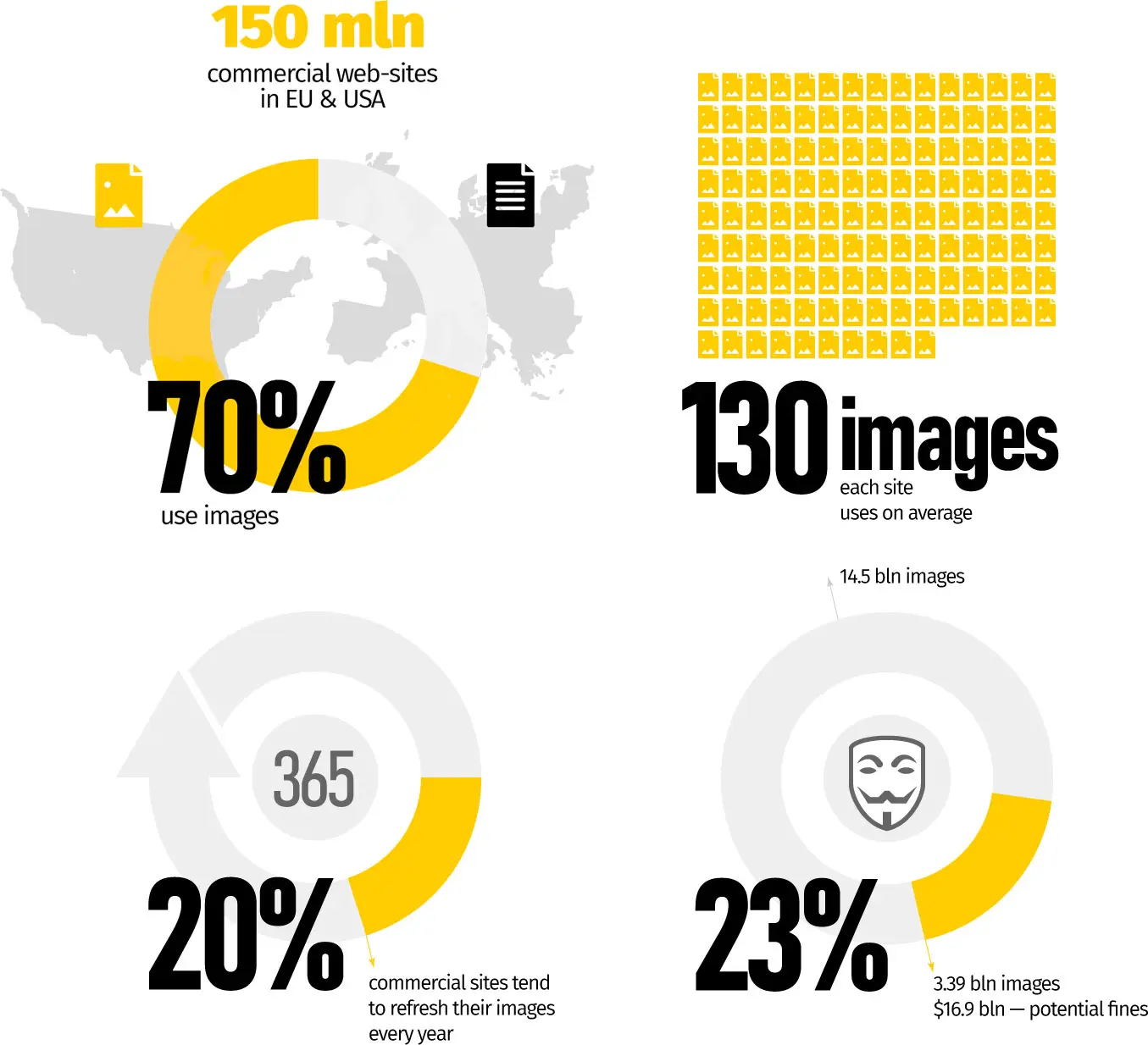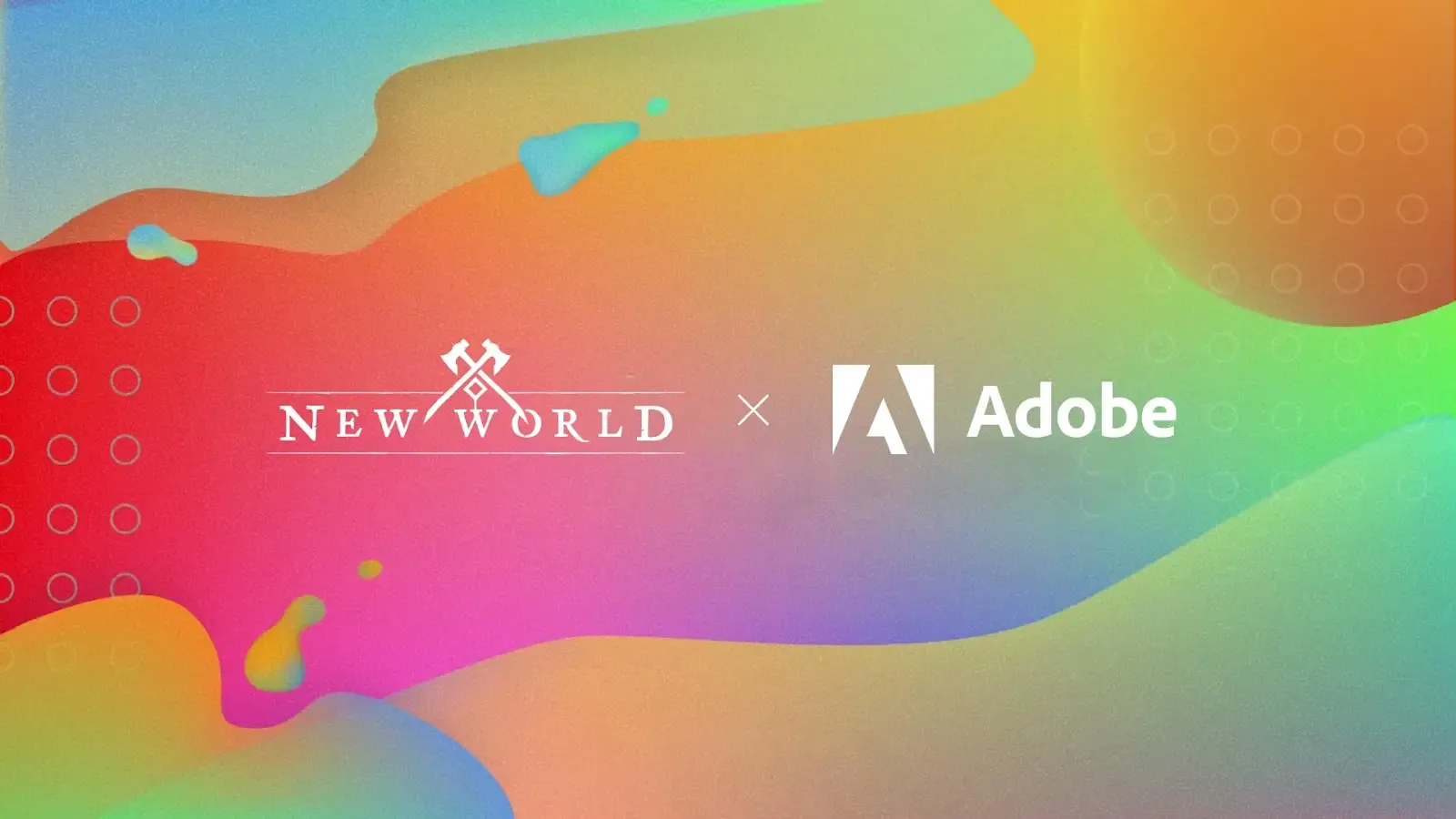In this article, you’ll learn:
What is marketing collateral?
Businesses use digital and printed assets (videos, photos, brochures) to promote their goals, and vision, drive sales, strengthen brand identity, and attract new customers. These assets are called marketing collaterals when combined.
Why are marketing collaterals called so?
The most common definition of the word collateral refers to its business application. Like when you rent a car you might be asked for a deposit - collateral that the renter will keep if you damage the car.
Marketing collaterals are called so because of the old definition of the term, from Latin collateralis meaning “side by side”. So, when we say marketing collaterals we mean “supplementary marketing materials”
Which would be a more correct modern definition of the term… although, not entirely.
While they’re called marketing collaterals, marketing is not the only thing you can use them for. For instance, if you were to create some new internal policy or a guideline, the assets that you’d create could also fall under the definition of marketing collateral. Language can sometimes be tricky.
But, one day or another, we all agreed to call them such and that’s that. So, now let’s look at some of the most common types of marketing collaterals and their general applications.
Digital Marketing Collaterals Examples
Blog Posts
A corporate blog is one of the most popular and effective forms of content marketing. Each post, then, is collateral and as per definition, you can use blogs for all kinds of things.
- Write a sales pitch, explaining why your product is better than that of the competitor.
- Create a marketing-oriented post describing the benefits of your product and how it can help you.
- Make a general help post, that does not exist to push a product but provides general value to the reader, like explaining how to speed up Google Drive uploads.
And many more uses fit for every occasion.
Blogs are really useful because besides passively generating traffic to your business, you can also repurpose them with the use of content collaboration tools! Say, you have a customer that is curious about this or that aspect of your product. You can refer them to a specific reading, subverting a need to repeat the same talking points over and over.With the help of knowledge graphs, you can create these posts as self-help resources, allowing customers to find answers independently.
Videos
With over 2.5 billion daily users, platforms like YouTube demonstrate that people love their moving pictures. Unsurprisingly, there is rarely a company that does not seek to leverage that natural desire to watch something and creates videos both for internal and external uses.
So, a company can create an onboarding video to illustrate the dos and don’ts of internal policy or dashing advertising showcasing their product in the best light.
For the B2B SaaS niche, videos are also a great way to both demonstrate value and actually explain how their product works. Because it is one thing to read “How to’s…” articles in the helpdesk, and the other is actually seeing someone actually doing things. Seeing is believing, after all. Video marketing strategies help B2B SaaS companies not only explain what their product does more clearly but also build trust and engagement by showing real, practical use cases that customers can easily relate to.
Reports
The other thing that people love? Numbers! Saying that “our product will make your life better” is one thing. Demonstrating that your product helped 80% of your surveyed users is another as it adds credibility to your words.
As a marketing effort, it has the side benefit of getting distributed without you lifting a finger. Let’s say that your company had made a report in a particular niche industry that no one else had done in the past. Now, whenever some writer or journalist will want to write about your industry, they will want to support their claims with numbers…that you, conveniently have!
Plus, you can then use these reports to scrutinize your existing efforts. If you’ve made some research and found out that less than half of surveyed users are happy with what you’re doing? Perhaps it would be a good sign to review some things that you’re doing!
If you want a shortcut to see what an empiric report might look like, you can check out our DAM Benefits Report from 2020.
E-books
Like blog posts, e-books are all about information, presented in an approachable and easy-to-digest manner. Their purpose is to educate the reader on:
- Benefits of using your product
- Describing mission statement and goals of your company
- Explaining how to use your product
What separates them from blog posts is the effort involved in creating an ebook as well as the depth and length of the reading. Where blogs have few images sprinkled between the paragraphs, e-books are a marriage of visual and textual, combining both in an impressive presentation.

Like other high-investment collaterals, e-books can be repurposed and incorporated into others (like I’m doing right now!), so it’s an investment that just keeps on giving. Moreover, with the help of online tools like the Axios HQ Summary Generator, you can share key excerpts of your book on your marketing channels for added reach.
Plus, it’s one of the better ways to get motivated leads. Most of the time, companies want something in exchange for sending you an e-book. That something is your e-mail address most of the time.It's crucial to verify these emails with an email verifier to ensure they are valid and active. It isn’t far-fetched to think that if someone was curious enough to request an e-book, they might be interested to learn more about you! That’s just a win-win for everyone involved.
Speaking of, we also have a few e-books, that you can check out here.
White paper
Like marketing collateral where the name doesn’t necessarily reflect the substance, white papers that we will talk about don’t have much in common with their original meaning or intent.
Originally, these were reports that described the researcher’s stance on a particular socioeconomic issue: what is the issue, why is it important, what should be done about it, and how. Think of them as an introduction, a prelude, to a more in-depth investigation or research into a subject.
In marketing, white papers mostly make a case for the product itself or for the company’s general direction. For example, when Apple announced that it will start using recyclable parts in its line of hardware, that can be considered a marketing white paper. Because while what Apple is doing is right for the environment, it also exists to promote the product and elevate it over the competition that doesn’t use recyclable parts.

That definition makes this a slightly confusing collateral to define because it does not have a defined medium like a blog post or a video. Because reports, case studies, and e-books, too, can make a case for why you should be using this specific product/service.
Testimonials
Testimonials and reviews are powerful examples of marketing collateral because they are produced by people that aren’t affiliated with you. Unlike you that need to convince people to buy your thing, current and past users aren’t obligated to tell good things about you, so when they do it creates credibility and trust. In fact, over 95% of those surveyed by Wyzol claim that their buying decisions are driven by reviews they read.
Like reports, those things can be repurposed in many ways. You can showcase positive testimonials on your landing pages to build trust or even repurpose these accolades for a newsletter or a blog post. That’s what we did when we earned G2 (SaaS reviews aggregate) accolades in 2021.
Plus, if you keep getting a lot of bad reviews? That’s a sign that you should get back to a drawing board to understand what is the root of the complaints. And, trust me, when users are upset about your product, they will tell you precisely what’s wrong with it. So, it's crucial to actively collect feedback to improve your product or service.Such feedback is worth its weight in gold.
Infographics
Infographics are a great way to present stats or important information visually. It draws attention, it quickly explains thighs that would have taken a few paragraphs to write out, and, like reports, they’re things that spread around the Internet like a wildfire. If you snatched an infographic from the web to illustrate your blog post, you’re inadvertently doing marketing for the company that originally made it, thanks to the logos and watermarks.
Plus, like any good marketing collateral infographics aren’t a one-and-done thing, as you can repurpose them for your blog posts, videos, and even e-books!There are plenty of tools to design advanced infographics, but you can still use PowerPoint to make infographics.

Webinars
Webinars - either streams or pre-recorded - are used to talk about trends in the industry, your company’s future, and other things. You can, for example, do an expert panel to educate the audience about the thing that is directly related to your business or auxiliary one. The online marketing agency can make a webinar on topics such as “How to build your brand identity from the ground up” for instance.
Now, besides being a marketing effort by itself (you effectively raise your brand awareness with a successful webinar), it is also a great way to generate leads that already demonstrated interest in engaging with you.
Websites
Websites are like Thanos of marketing collaterals because they act as the main send-off point for all others. After all, how else will viewers access your blog posts, videos, e-books, webinars, etc.?
Because they act as the main platform for all you do, your website should be given an extra level of care: ensure that it is pleasant to look at (no orange on green color schemes, please), loads fast, and doesn’t require hand-holding do understand how to access everything that a user might need.
Landing pages
Those can be considered a special subcategory of your website that is more in line with your other collaterals in form and purpose. As the name suggests, it’s a page on which user “lands” (or ends up, rather) after they do a specific action.
So, you can run some ads that will lead to a page with a brief description of a product and a big, shiny BUY button. Or make a sign-up page for your webinar or a trial to make it easier to present a specific slice of information without cluttering your homepage. Besides making it convenient for users, it will also improve your sales funnel.
For example, if I wanted our readers to book a demo of our product, it is better if there is a page dedicated specifically to that action. If you linked to the homepage instead, users may struggle to find the required form, get frustrated, and leave. Which is a bad thing.
Plus, landings are a great way to study your market! How do you figure out the user’s search intent and the ways that they find out about your product? You can create two almost identical landing pages optimized for different keywords and search queries. Then, you can analyze the traffic coming to both landings to understand how to fine-tune your marketing efforts.
How to Create Marketing Collaterals
Marketing collaterals are some of the most valuable and important assets at your disposal and, as such, should be included in businesses' affiliate marketing strategies to help get the most from affiliates.
I cannot tell you which assets to focus on as I don’t know your niche or budget (plus, one asset isn’t necessarily “superior” to another). But I can suggest a few guidelines that ensure that your efforts aren’t in vain.
Be Data-Driven
Let’s talk about the Monty Hall problem .
Suppose you're on a game show, and you're given the choice of three doors: Behind one door is a car; behind the others, goats. You pick a door, say No. 1, and the host, who knows what's behind the doors, opens another door, say No. 3, which has a goat. He then says to you, "Do you want to pick door No. 2?" Is it to your advantage to switch your choice?

The intuition may suggest that “it doesn’t matter” but that would be wrong. Marilyn Vos Savant explains that your initial choice of the door had ⅓ odds of being the correct one, while the two doors you haven’t chosen, had ⅔ . When the goat is revealed, the second unknown door still has ⅔ odds while the door with the goat behind it has 0 odds of having a car, meaning that it is always beneficial to switch.
Why am I telling you this? Because data can often be counter-intuitive but it doesn’t make it any less correct.
Understanding your market, audience, and demographics is not only about assessments but about studying and interpreting raw numbers that you receive with Google Analytics, Ahrefs, Jotform Survey Maker, and any other tools that you might have in your disposal.
If you keep creating blog posts that talk endlessly about your product (and nothing else) but it doesn’t give you any traffic whatsoever then the data explicitly tells you that you need to reconsider your approach.
Be Mindful of Your Audience
The customer is always right because they know what they want. And if you don’t offer what they want, they will go to someone who does.
When creating videos, blog posts, and ebooks, understand who are you creating them for: their needs, age, income, etc. This will not only help you with creating a proper tone for your marketing collaterals but may also expand avenues for your marketing efforts, that you might not have considered before.
Case in point: Amazon’s daughter company Twitch is a streaming platform dedicated to live streams of games, events, and more. Its demographic is dominantly high school children and college students. The latter demographic is also very important for Adobe, as over 12 million students use Adobe Creative Cloud daily.

Understanding that intersection, Adobe decided to run promos on Twitch during the launch of MMO New World. Adobe gave an opportunity to stream viewers to dictate the appearance of in-game items that were dropping for their favorite streamers. This engagement was widely successful and, as the preceding link demonstrates, allowed Amazon to repurpose that collateral for an impressive report/case study on their corporate blog.
Be True to Your Values and Identity
Consistency is one of the most important factors in establishing a strong brand identity. Marketing collaterals are not an exception.
What this means, in practice, is that if you’re writing a blog post, it would be a bad idea to switch-up your writing style on alternating days. There is time and place for casual conversational style and some strict, dry scientific language, but we tend to visit a particular publication for one or the other. Custom essay writing services can be invaluable for students seeking well-researched and professionally written content to complement their marketing collateral.
In the same vein, make sure that all colors, logos, fonts, etc. are consistent across your collaterals. Otherwise, when people see them in the wild, it might be difficult for them to associate those with your particular brand.
Lastly, stay consistent with your message and purpose. The basic example that I can give is that if one is running a video production agency, it would be really odd if their website had nothing but text on it, would it?
In short: practice what you preach.
How Digital Asset Management Can Help You With Collaterals
As I was describing marketing collaterals, you might have noticed that I kept bringing up one major point: “create this and repurpose it later.” Marketing collaterals, especially videos and ebooks, are a large investment of time and finances. It really doesn’t make sense to use them only once with minimal dividends.
So you can create an infographic and later re-use it in a blog post, or showcase your report findings in an upcoming video or webinar… provided that you can find them.
Losing data remains a pressing issue and I’m not talking only about a literal loss where data gets corrupted, leaked, or stolen. Simply losing things is still an issue. Maybe it was stored on someone else’s hard drive or you simply cannot find this or that video because of improper naming conventions.
Digital Asset Management (DAM) software is a tool designed specifically to help you categorize, revise, and search for assets in the easiest way imaginable. That way, you never have to spend hours looking for that old webinar recording or, in the worst case, creating a new asset from scratch.
If you want to learn more about DAM, we have a neat little landing describing its benefits here
Conclusion
- Marketing collaterals are assets created to promote goals, and vision, drive sales, strengthen brand identity, and attract new customers.
- The most common types of digital marketing collaterals are blog posts, videos, reports, e-books, white papers, testimonials, infographics, webinars, and websites (and landing pages).
- When creating marketing collaterals utilize data to understand the audience that you are creating them for, understand the audience's pain points, and remain consistent with your brand identity.
- Digital asset management software can help you store and organize collaterals for later use and for recycling.
Did you enjoy this article? Give Pics.io a try — or book a demo with us, and we'll be happy to answer any of your questions.
FAQ
Why are marketing collaterals called collaterals??
Marketing collaterals are called so because of the old definition of the term, from Latin collateralis meaning “side by side”. So, when we say marketing collaterals we mean “supplementary marketing materials.” It has nothing to do with transactional collateral which means "security deposit."
How marketing collaterals are used?
Marketing collaterals help you promote your vision and brand. Using visual and narrative storytelling, you describe what is the purpose of your product, its strengths, and why one should care about them.




